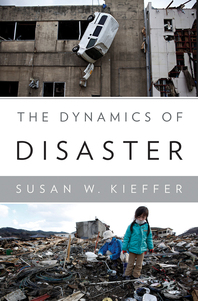
The Dynamics of Disaster
19 November 2013
Territory Rights — Worldwide.
Description
Natural disasters bedevil our planet, and each appears to be a unique event. Leading geologist Susan W. Kieffer shows how all disasters are connected.
Despite these events, we still behave as if natural disasters are outliers. Why else would we continue to build new communities near active volcanoes, on tectonically active faults, on flood plains, and in areas routinely lashed by vicious storms?
A famous historian once observed that “civilization exists by geologic consent, subject to change without notice.” In the pages of this unique book, leading geologist Susan W. Kieffer provides a primer on most types of natural disasters: earthquakes, tsunamis, volcanoes, landslides, hurricanes, cyclones, and tornadoes. By taking us behind the scenes of the underlying geology that causes them, she shows why natural disasters are more common than we realize, and that their impact on us will increase as our growing population crowds us into ever more vulnerable areas.
Kieffer describes how natural disasters result from “changes in state” in a geologic system, much as when water turns to steam. By understanding what causes these changes of state, we can begin to understand the dynamics of natural disasters.
In the book’s concluding chapter, Kieffer outlines how we might better prepare for, and in some cases prevent, future disasters. She also calls for the creation of an organization, something akin to the Centers for Disease Control and Prevention but focused on pending natural disasters.
Reviews
"Fast-moving, interesting… Imparts a range of knowledge of the risks of natural hazards in a relatively painless way that educates but also entertains." — Donald Turcotte, Science
"A clear, engagingly wonky introduction to the field." — Publishers Weekly
"A study on natural disasters [that] puts fizz into the physics." — Nature
"Photos enhance the drama of this highly accessible look at disasters." — BookProfessor.com
"Geologist Kieffer analyzes recent earthquakes and eruptions with a clear eye on improving our planning for, and response to, these inevitable events." — Discover Magazine
"If you are an amateur weather geek, disaster wonk or budding student of the earth sciences, you will want to read this book." — Seattle Times
"[T]he clarity of Kieffer’s writing, coupled with her careful choice of supporting graphics, makes the content engaging and accessible to a wide readership." — The Times Higher Education



